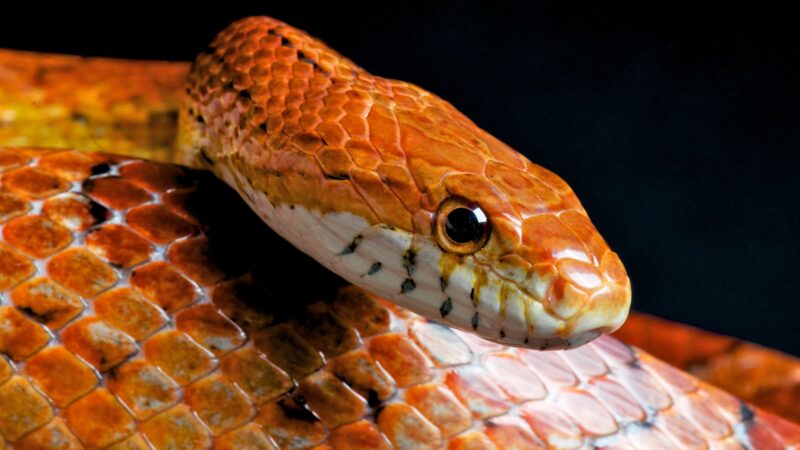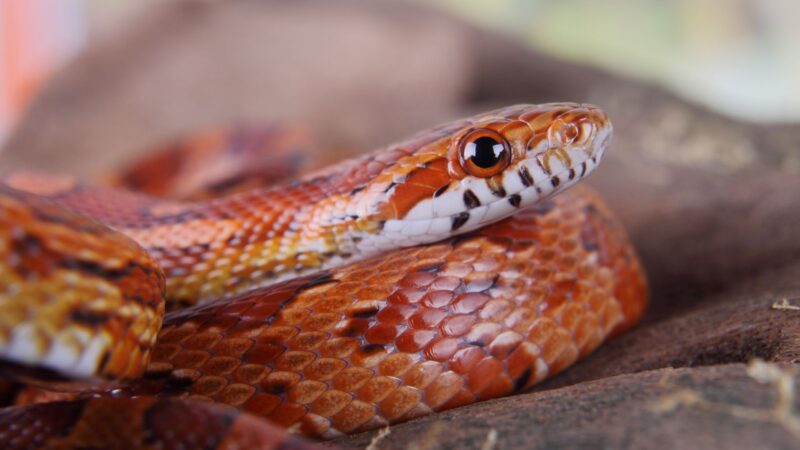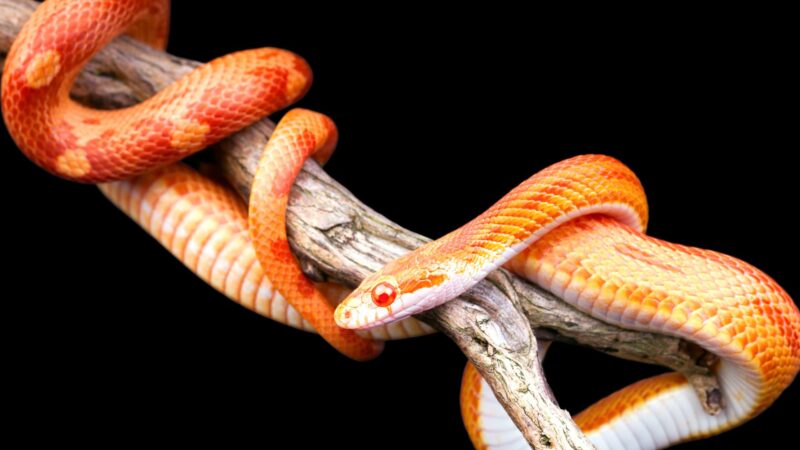Although corn snakes have a gentle nature, they may resort to biting when mishandled, accidentally trampled upon, or intentionally harassed. As such, it might be dangerous if you come in contact with these unwelcomed guests in your premises.
So, how to get rid of corn snakes? Managing rodent populations, sealing openings, maintaining a clean property, contacting professional snake removal services, and making natural snake repellents are ways you can do so.
For more information about corn snakes and how to effectively get rid of and prevent them from coming back, this article will explain everything!
What Are Corn Snakes?

Corn snakes (Pantherophis guttatus) are non-venomous snakes found across Eastern and Southeastern United States. They are terrestrial constrictors most often mistaken as copperheads due to their coloration.
What Does Corn Snakes Look Like?
They are slender-bodied snakes with a brownish-yellow or orange in color with black-edged, red blotches running across the length of their bodies. Corn snakes have a checkerboard-like pattern on their bellies.
What Do Corn Snakes Eat?
Adult corn snakes feed on rats, mice, bats, and birds while juveniles feed on tree frogs and lizards. As mentioned earlier, they are restrictors that suffocate prey by wrapping around them then swallow them whole.
Related: How to Get Rid of Brown Anole Lizards Naturally | Essential Tips!
Where Do Corn Snakes Live?
They commonly inhabit hardwood hammocks, pinelands, agricultural fields, and swamps. However, corn snakes can also be found in suburban communities that provide suitable habitats.
How Long Do Corn Snakes Live?
In human care, they live a lifespan of 23 years. In the wild, it is significantly less at around 10 to 15 years.
How Big Will a Corn Snake Get?
Corn snakes are usually about 30 to 48 inches in length but some may reach up to 74 inches. Their average weight is 900 grams.
What Is the Behavior of a Corn Snake?
Corn snakes are mainly nocturnal and spend most of their time foraging for food in underground rodent burrows. During the day, they hide under debris. They are also excellent tree climbers.
Why Is It Called a Corn Snake?
These snakes are named after the maize corn kernel patterns that decorate their bodies. Additionally, it is also speculated that they were abundant near grain stores since they feed on rats and mice that subsequently fed on maize.
Are Corn Snakes Domesticated?

Yes, they are usually kept as pets or in captivity. Due to their unique coloration and docile nature, they are quite popular as a beginner snake.
Do Corn Snakes Bite?
Yes, although corn snakes are generally docile creatures, they will bite as a defense mechanism when they feel threatened or are mishandled.
Related: How to Get Rid of Black Rat Snakes? | Effective, Safe, and Humane Solutions
What Makes Corn Snakes Aggressive?

Aggressive behavior is typically not observed from corn snakes unless they are handled roughly, harassed, or feel threatened. Other reasons can stem from stress, fear, insufficient maintenance, or a change in their everyday routine.
Related: How to Get Rid of Cottonmouth Snakes? | Effective Techniques and Safety Tips
When Should You Not Handle Corn Snakes?
When they have just fed or when they’re shedding their skin. The first is because they need to properly digest their food on their own and handling them may disrupt the process. The latter is because they might get defensive and resort to aggressive behavior.
How to Get Rid of Corn Snakes?

To manage these snakes and prevent them from coming back, here are some strategies you can employ:
- Control rodent population as much as possible. Reducing food availability also decreases the chances of these snakes coming into your property.
- Seal all existing and potential gaps and openings with durable caulking material. Install screens in vents and door sweeps if necessary.
- Contact professional wildlife control services at the first sighting of the snake so that they can safely and humanely remove it from the premises.
- Maintain a clean property. Mow grasses to reduce potential hiding spots for the snakes and fill in all burrows to prevent them from creating dens.
- For added protection, you can make a DIY snake repellent and place it in areas where you think they might go to.
Related: Best Natural Snake Repellents: A Complete Guide
List of Sources
Florida Museum of Natural History. (n.d.). Red Cornsnake.
Mann, A. (2003). Cornsnake: Elaphe guttata guttata.
North Carolina Wildlife Profiles. (n.d.). Corn Snake.
Resmer, K. (n.d.). Pantherophis guttatus: Red corn snake.
- How to Get Rid of Copperheads | Practical Guide - August 27, 2023
- How to Get Rid of Corn Snakes | What Makes Them Aggressive? - August 27, 2023
- How to Get Rid of Alligators | Safety Measures and Removal Methods - July 16, 2023

